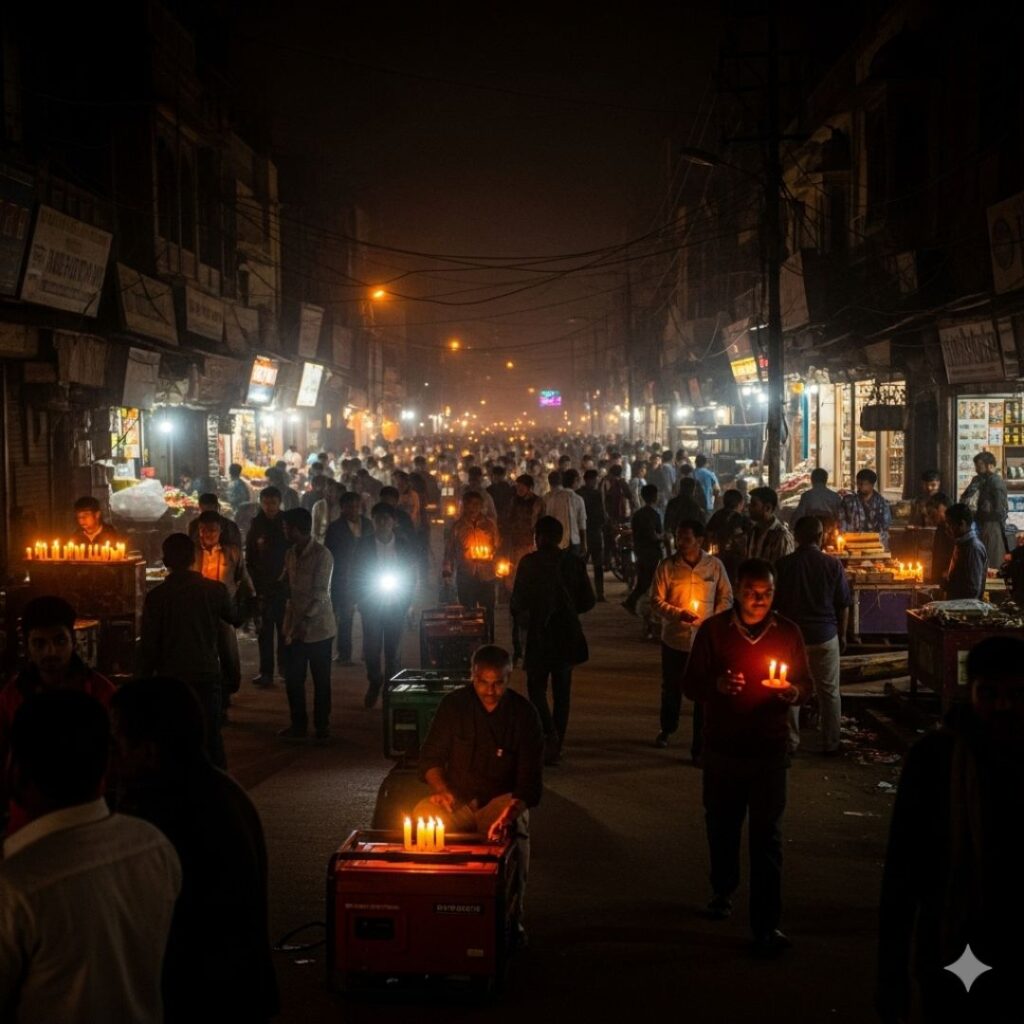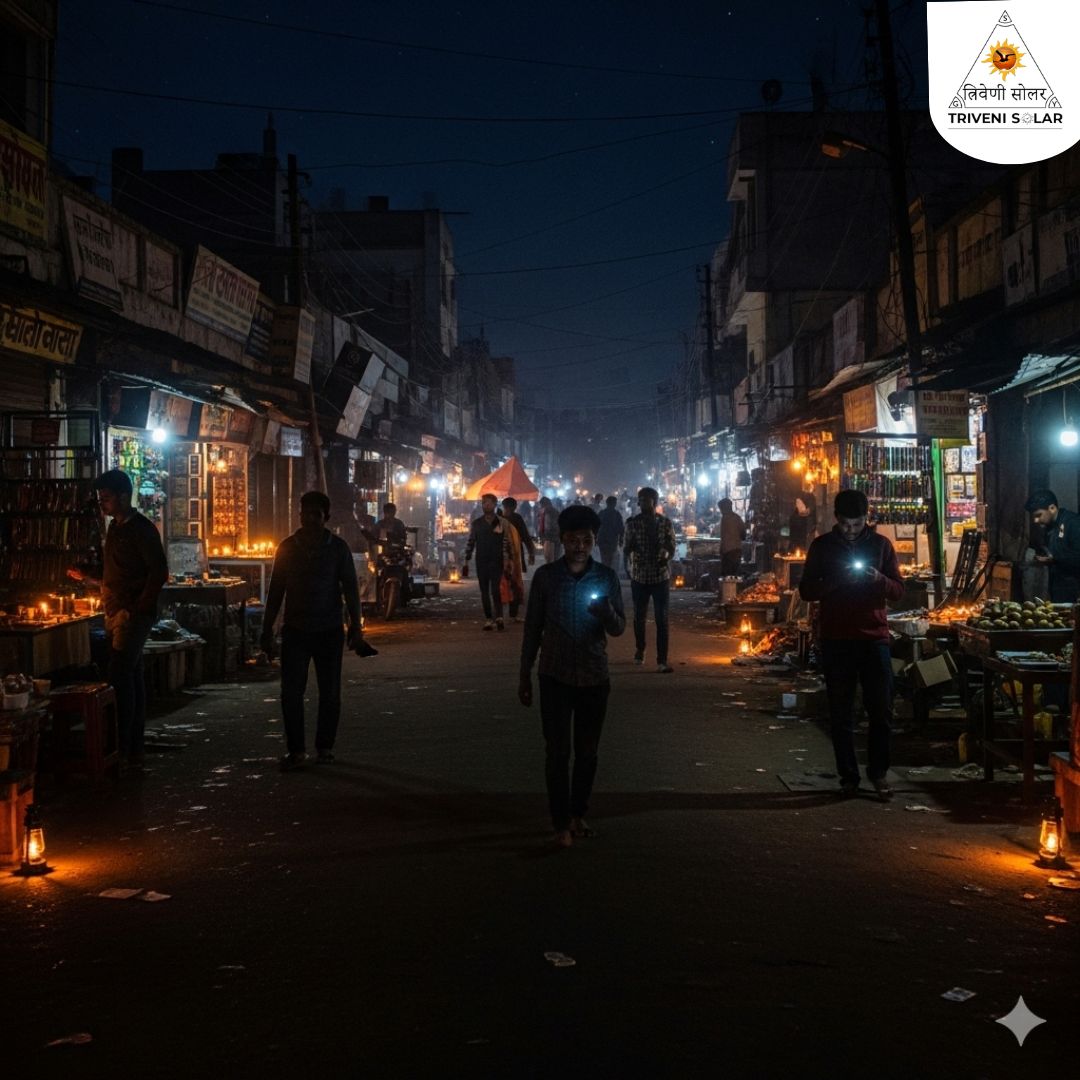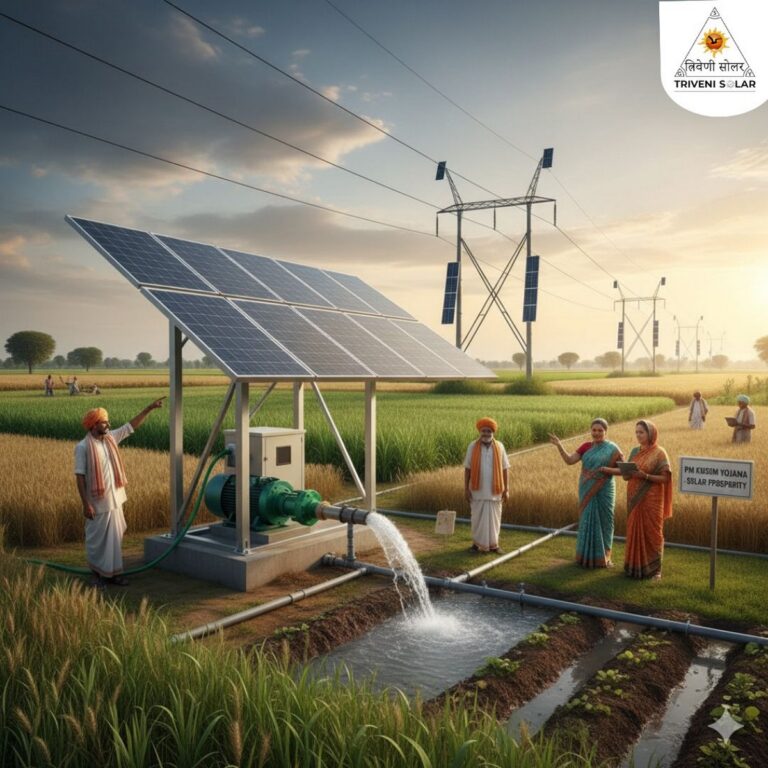Power Cuts In India remain common in many areas of India due to infrastructure limitations, high electricity demand, and policy gaps. Initiatives like the PM Surya Ghar Yojana promote rooftop solar solutions, reducing dependency on the grid and ensuring uninterrupted power supply.
Why Do Power Cuts Remain Common in India?
Infrastructure Limitations and Aging Grid Systems
India’s power grid, while extensive, struggles with outdated infrastructure in several regions. Transmission losses, frequent transformer failures, and insufficient maintenance contribute to widespread outages. Many rural areas are still connected via aging lines prone to disruption during storms or heavy demand.
High Demand and Insufficient Supply
The growing population, industrial expansion, and increased household consumption have created a supply-demand gap. Peak-hour shortages often result in rolling blackouts, affecting both urban and rural households.
Policy Gaps and Implementation Challenges
Although policies exist to improve electricity distribution, implementation often lags due to administrative hurdles, budget constraints, and local inefficiencies. The gap between policy formulation and execution leaves millions vulnerable to power cuts.
Regional Disparities: Areas Most Affected by Power Outages
Urban vs. Rural Power Supply Issues
Urban centers generally have better access to electricity but face power cuts due to overloading and industrial demand. Rural areas, however, often deal with intermittent supply caused by long transmission lines, insufficient infrastructure, and low grid connectivity.
Case Study: Power Cuts in Dehradun and Hyderabad
In cities like Dehradun, frequent outages occur due to aging equipment and increased residential load. Hyderabad, despite advanced infrastructure, experiences cuts during peak summer months when demand spikes for cooling appliances. These examples highlight the need for sustainable energy alternatives.
Government Initiatives to Address Power Shortages
The PM Surya Ghar Yojana: An Overview
The PM Surya Ghar Yojana is a pioneering initiative encouraging households to adopt rooftop solar panels. The scheme aims to reduce dependency on conventional power sources, lower electricity bills, and promote sustainable energy practices nationwide.
Other Government Schemes and Their Impact
- Deen Dayal Upadhyaya Gram Jyoti Yojana – Focused on rural electrification.
- Solar City Program – Promotes solar adoption in urban centers.
- Subsidies and Incentives – Financial support for households and small businesses installing solar solutions.

Adopting Renewable Energy: A Sustainable Solution
Benefits of Rooftop Solar Systems
- Reliable power supply during outages.
- Reduction in electricity bills.
- Eco-friendly alternative, reducing carbon footprint.
- Government incentives make installation affordable.
How to Apply for the PM Surya Ghar Yojana
Eligible households can apply through the official PM Surya Ghar portal. The process involves verification, subsidy calculation, and professional installation of rooftop solar panels. Once installed, households experience uninterrupted power, even during grid outages.
Real-Life Success Stories
Several households in states like Rajasthan and Maharashtra have successfully reduced dependency on unreliable grid power by installing rooftop solar systems. Families report lower bills and consistent electricity for essential appliances.
Practical Tips for Households to Mitigate Power Outages
Energy-Efficient Appliances and Practices
- Use LED bulbs instead of incandescent lights.
- Switch to energy-efficient refrigerators and air conditioners.
- Unplug devices during non-use to reduce standby consumption.
- Utilize smart meters to monitor and optimize energy usage.
Community Initiatives and Local Solutions
Neighborhood groups can collaborate to install shared solar systems or backup generators. Local microgrids in rural areas ensure minimal disruption during outages.
The Environmental Impact of Frequent Power Cuts
Increased Emissions and Ecological Consequences
Frequent reliance on diesel generators during outages leads to higher greenhouse gas emissions. Blackouts can also disrupt water treatment and refrigeration, affecting public health and safety.
The Role of Renewable Energy in Reducing Environmental Footprint
Solar and other renewable energy sources provide clean, sustainable power. By adopting these alternatives, households can contribute to reducing the environmental consequences of conventional electricity generation.
Conclusion: Empowering Households for a Sustainable Future
The Importance of Government Schemes and Community Participation
Initiatives like the PM Surya Ghar Yojana empower citizens to take control of their energy needs. Coupled with community efforts and energy-efficient practices, these programs pave the way for a reliable and sustainable power supply.
Looking Ahead: The Future of Power Supply in India
As India continues to modernize its grid and promote renewable energy, households can expect fewer interruptions and more environmentally conscious energy consumption. Embracing rooftop solar through programs like PM Surya Ghar is not just a solution to power cuts—it is a step towards energy independence.
CTA: Discover how you can make your home energy-independent with the PM Surya Ghar Yojana today. Reduce your electricity bills and enjoy uninterrupted power supply!
FAQs
What are the main causes of power cuts in India?
Power cuts are primarily caused by outdated infrastructure, high electricity demand, and policy implementation gaps. Natural disasters and grid failures can also contribute.
How does the PM Surya Ghar Yojana help in reducing power cuts?
The scheme promotes rooftop solar installations, allowing households to generate their own electricity and reduce dependency on the grid, ensuring continuous power supply.
What regions are most affected by power outages?
Rural areas face severe outages due to long transmission lines and insufficient infrastructure, while urban centers experience peak-hour shortages and overloading issues.
Can households get financial support for rooftop solar?
Yes, government subsidies and incentives under PM Surya Ghar Yojana make rooftop solar installations affordable for eligible households.
What are practical steps to minimize the impact of power cuts?
Using energy-efficient appliances, installing rooftop solar systems, and participating in community energy initiatives can help households mitigate the effects of power outages.



